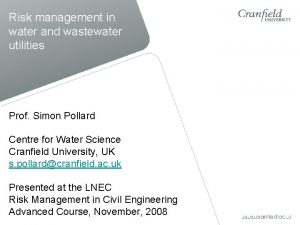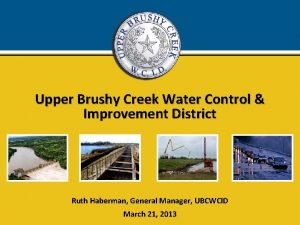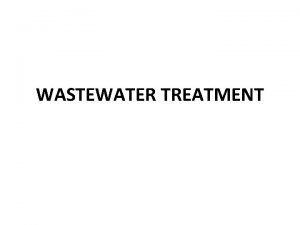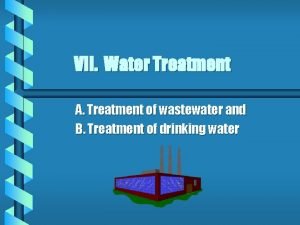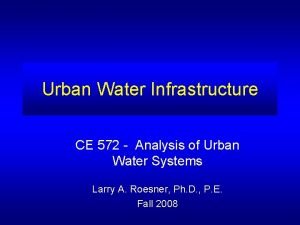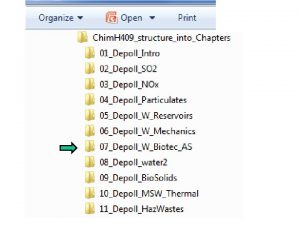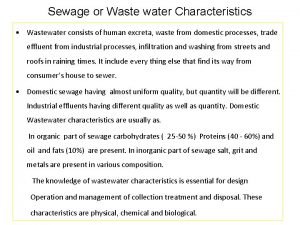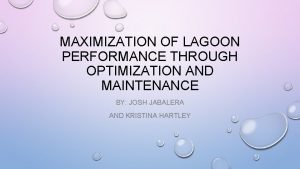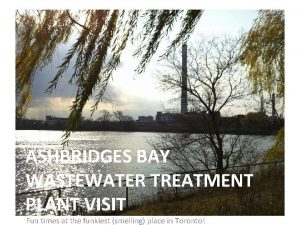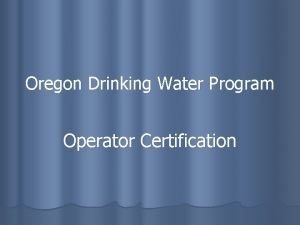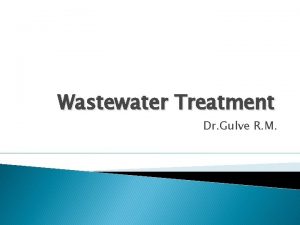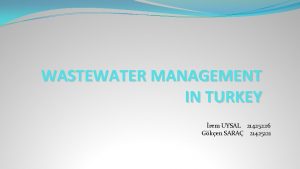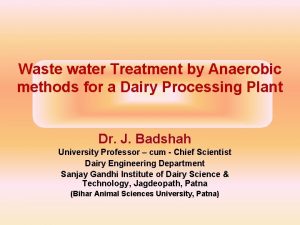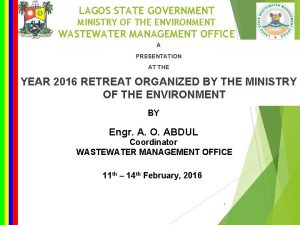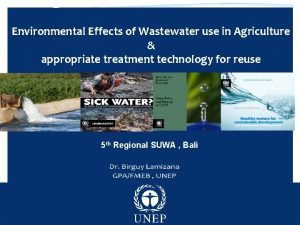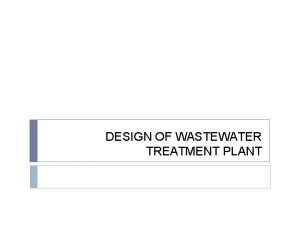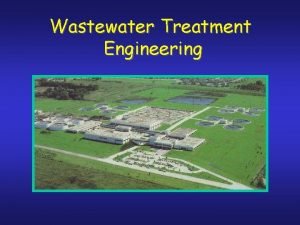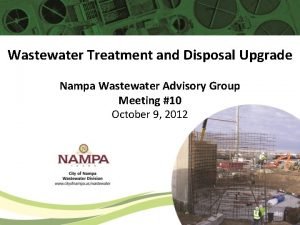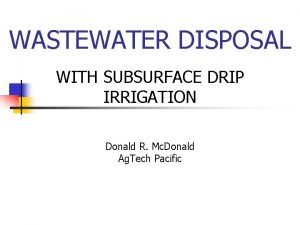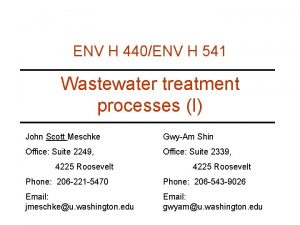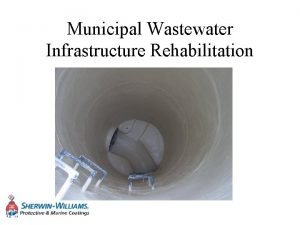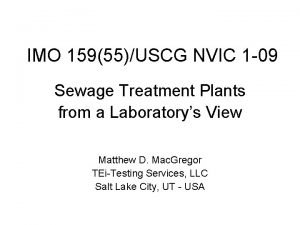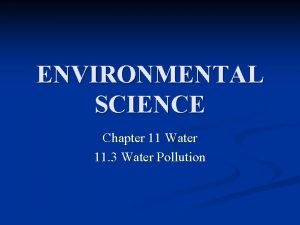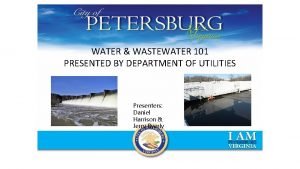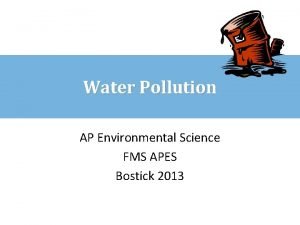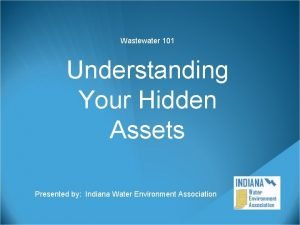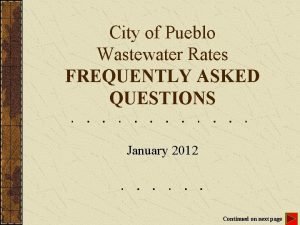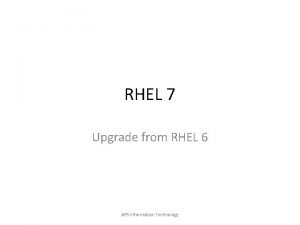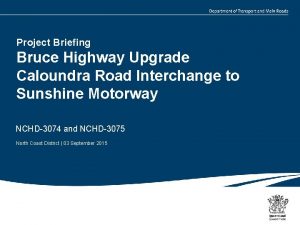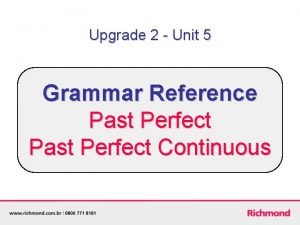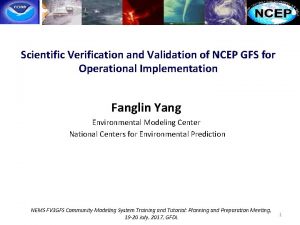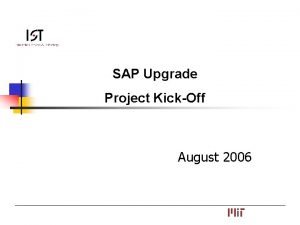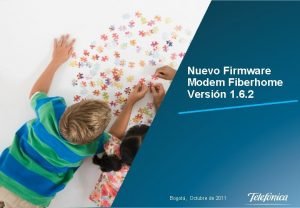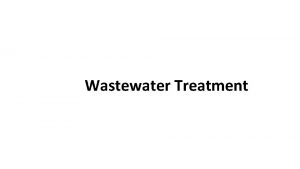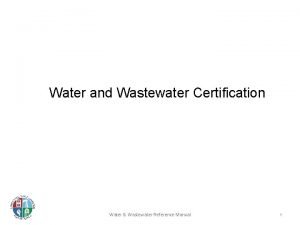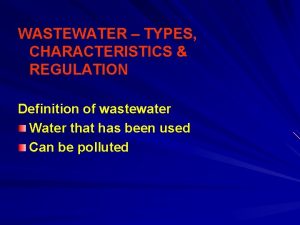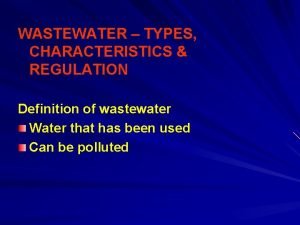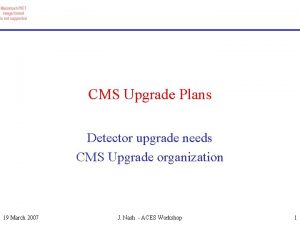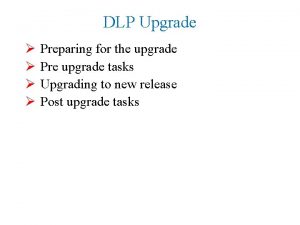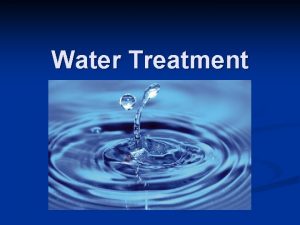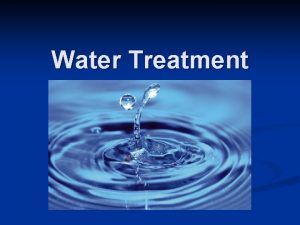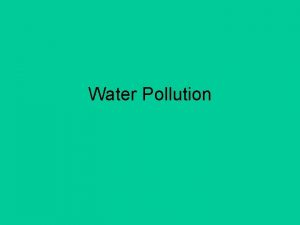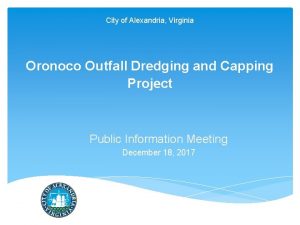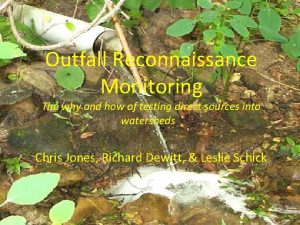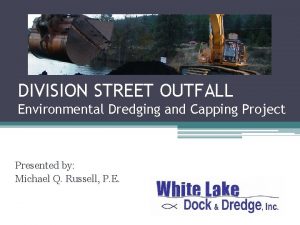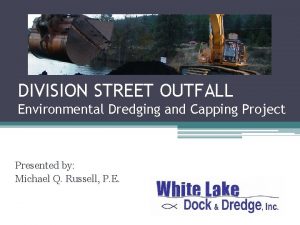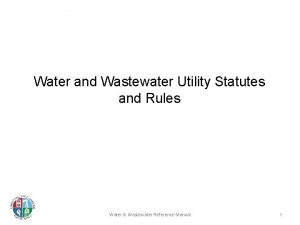ALDERWOOD WATER AND WASTEWATER DISTRICT OUTFALL UPGRADE Seattle

























































- Slides: 57

ALDERWOOD WATER AND WASTEWATER DISTRICT OUTFALL UPGRADE Seattle University Senior Design Team CEE 16. 7 Kristin Ramey, Isabella Schwartz, Abbie Lorensen, Larissa Grundell

Science and Engineering Project Center College of Science and Engineering Seattle University Faculty Advisor: Dr. Michael Marsolek Sponsor: Alderwood Water and Wastewater District

Acknowledgments Thank you!

Useful Terms Outfall: The pipe that conveys treated effluent from the wastewater treatment plant to the Puget Sound Diffuser: The last section of pipe that has openings to distribute effluent into the surrounding water body


1, 300 ft - 18” Reinforced Concrete 80’ Diffuser 4” Portholes 3, 100 ft - 18” Ductile Iron 1972 – CAS Facility 2013 – MBR Facility

Project Motivation Structural Condition �Internal condition unknown �External inspections show signs of corrosion Pipe Capacity �Expanding Service Area Corrosion of pipe to flange weld at 12 o’clock position on outfall pipe.

Project Motivation Q= 8. 7 MGD Q=15. 8 MGD

Design Approach Preliminary Assessment �Condition Assessment �Hydraulic Analysis Design Selection Design Considerations �Detention Vault Design �Pipe Replacement �Mixing Zone Analysis Cost & Decision

Preliminary Assessment Condition Assessment Hydraulic Analysis

Preliminary Assessment Condition Assessment Hydraulic Analysis

Condition Assessment External Dive Inspection �Determine condition of submerged concrete pipe and diffuser �Results: Flanged end of diffuser in "poor" condition with heavy corrosion Indicates a new diffuser should be included in all design options Internal Camera Inspection �On hold

Preliminary Assessment Condition Assessment Hydraulic Analysis

Hydraulic Modeling Purpose: �Determine capacity of the outfall Approach: �Use PCSWMM to model dynamic outfall hydraulics Storm Water Management Model Constructed by the EPA �Use as-built information to construct model �Input weather flow data from December 2015 �Apply peaking factor

Hydraulic Modeling Conduit Junction

Hydraulic Modeling

Hydraulic Modeling Max Flow = 11. 1 MGD

Hand Calculations WWTP Z=169’ Z

Hand Calculations Velocity Head Ambient /Effluent Density Difference

Hand Calculations Datum

Hand Calculations

Hand Calculations

Hand Calculations Bend 1 2 3 4 5 6 7 8 Total Radius of Curvature 48 37. 3 7. 26 7. 16 3. 87 16. 26 14. 67 K 0. 35 0. 25 0. 16 0. 35 0. 32 1. 48’ 1. 48’ 0. 52’ 0. 37’ 0. 24’ 0. 52’ 0. 47’ 3. 48’

Hand Calculations

Hand Calculations

Hand Calculations WWTP Z

Capacity Conclusions Hydraulic modeling capacity = 11. 1 MGD Hand calculations capacity = 11 MGD �Corroborates modeling results 11 MGD capacity is less than the projected 15. 8 MGD �Design options need to account for flow attenuation

Design Selection Option 1 Option 2 Option 3 Partial Replacement Detention Vault Shallow Diffuser Extend Diffuser Full Replacement Extend Diffuser

Design Considerations Detention Vault Pipe Replacement Mixing Zone Analysis

Detention Vault Design Purpose: �Flow attenuation is required Approach: �Conservation of mass �Inflow – modified wet weather time series �Outflow – 10 MGD (conservative) Q=15. 8 Q=10 MGD 30, 000 gallons

Detention Vault Design Constrained by �Max Plan Dimensions: 100 ft X 45 ft �Pipe diameter of surrounding pipe network: 24 in Design Plan Dimensions: 45 ft X 15 ft Vault Detention Vault Plan View

Detention Vault Design Constrained by: �Allowable depth 22 ft. Design depth 10 ft Detention Vault Profile Section

Design Considerations Detention Vault Pipe Replacement Mixing Zone Analysis

Pipe Replacement Purpose: �Condition assessment shows concrete is deteriorating �Hydraulic analysis indicates insufficient capacity Approach: Partial Replacement Full Replacement Replace concrete portion with 24” pipe Replace entire system with 24” pipe Alleviate structural concerns Improves capacity Compatible with future upgrades Alleviate structural concerns

Pipe Replacement - Capacity Calculations WWTP Z

Pipe Replacement - Material Selection Ductile Iron Portion �Replace with 24” DIP Concrete Portion �Replace with 24” HDPE Advantages Corrosion resistance Fatigue Resistance Extended service life Flexibility Disadvantages Relies on surroundings for rigidity Floats Larger pipes require heavier/thicker walls Difficult to verify field joint quality

Pipe Replacement - Anchor Design: �Calculated Weight = 2120 lbs/Anchor Detail – Dimensions determined from weight requirement

Design Considerations Detention Vault Pipe Replacement Mixing Zone Analysis

Diffuser Design - Mixing Zone Analysis Purpose: �Scope of the project includes a diffuser design �Department of Ecology (DOE) requires a mixing zone analysis to receive an NPDES permit Approach: �Performed analysis on current diffuser �Used the same process for new diffuser design

Diffuser Design - Mixing Zone Analysis Steps 1. Determine mixing zone regions �Define acute and chronic zones boundaries as prescribed by the DOE Permit Writer’s Manual 2. 3. 4. Calculate dilution factors Calculate pollutant concentrations at mixing zone boundaries Ensure this meets pollutant regulations Wastefield plume Profile Section

Chronic Mixing Zone • 264. 4 Mixing ft. Acute Zone Aquatic • • 26. 4 ft. criteria considered • Aquatic criteria • considered Human health criteria considered for: • Carcinogenic pollutants • Non-carcinogenic pollutants Plan View

Diffuser Design - Dilution Calculations Input �Ambient water specifications current velocity and direction ambient water density �Discharge characteristics flow rates effluent density diffuser depth port size port spacing Visual Plumes will calculate the dilution ratio of the effluent to the water at specific distances from the diffuser

Diffuser Design - Pollutant Concentrations

Diffuser Design - Diffuser Selection Replaces open port diffuser with duckbill diffuser Duckbill valve remains closed under low flow preventing seawater intrusion and sediment buildup Duckbill Valve Profile View

Diffuser Design - Plume Depth Considerations To protect shellfish the plume boundary should be below -70 ft. MLLW -70 ft -115 ft

PROPOSED SYSTEM DESIGNS

Option 1 Replace with 24” HDPE

Option 2 Replace with 24” HDPE

Option 3 Upsize to 24”

Cost Estimate

Option Summary Option 1 Option 2 Option 3 Better Effluent Mixing Least Expensive Better Effluent Mixing Longest Potential Lifespan Most Expensive

Option Summary Option 1 Option 2 Option 3 Better Effluent Mixing Least Expensive Better Effluent Mixing Longest Potential Lifespan Most Expensive

Option Summary Option 1 Option 2 Option 3 Better Effluent Mixing Least Expensive Better Effluent Mixing Longest Potential Lifespan Most Expensive


Conclusion Recommendation: Option 3 �Highest score in matrix Longest lifecycle Minimal O&M Minimal Impacts over lifespan AWWD Response �Incorporated Option 3 design into plant assessment project Option 3 Full Replaceme nt Extend Diffuser

QUESTIONS?

Diffuser Design - Dilution Calculations Average dilution Centerline dilution At 26. 4 ft. the DF is 45 Dilution with Acute Zone, Aquatic Life Criteria
 Water and water and water water
Water and water and water water Risk management for water and wastewater utilities
Risk management for water and wastewater utilities Upper brushy creek water control and improvement district
Upper brushy creek water control and improvement district Lakehaven water
Lakehaven water Wastewater treatment purpose
Wastewater treatment purpose Aquaculture wastewater characteristics
Aquaculture wastewater characteristics Wastewater treatment process primary secondary tertiary
Wastewater treatment process primary secondary tertiary Wastewater distribution system
Wastewater distribution system Typical composition of untreated domestic wastewater
Typical composition of untreated domestic wastewater Characteristics of wastewater
Characteristics of wastewater Winter lagoon optimization
Winter lagoon optimization Ashbridges bay water treatment plant
Ashbridges bay water treatment plant Oregon wastewater operator certification
Oregon wastewater operator certification Peak flow average
Peak flow average Municipal wastewater treatment
Municipal wastewater treatment Agricultural wastewater treatment technologies
Agricultural wastewater treatment technologies Anaerobic wastewater treatment
Anaerobic wastewater treatment Wastewater infrastructure design in texas
Wastewater infrastructure design in texas Sacramento regional wastewater treatment plant
Sacramento regional wastewater treatment plant Lagos state wastewater management office
Lagos state wastewater management office Agricultural wastewater treatment technologies
Agricultural wastewater treatment technologies Primary detention
Primary detention Secondary wastewater treatment
Secondary wastewater treatment Nampa wastewater treatment plant
Nampa wastewater treatment plant Bioline netafim
Bioline netafim Wastewater treatment for dairy industry
Wastewater treatment for dairy industry How to increase nitrogen in soil
How to increase nitrogen in soil Class a sludge
Class a sludge Sherwin williams mortar
Sherwin williams mortar Conclusion of wastewater treatment
Conclusion of wastewater treatment Introduction water pollution
Introduction water pollution Scwwa
Scwwa Primary treatment definition apes
Primary treatment definition apes Wastewater 101
Wastewater 101 Canagliflozin
Canagliflozin Pueblo wastewater
Pueblo wastewater Upgrade 2003 to 2008
Upgrade 2003 to 2008 Database upgrade project plan
Database upgrade project plan Visio 2010 updates
Visio 2010 updates Upgrade image quality
Upgrade image quality Rhel 6 to rhel 7 upgrade
Rhel 6 to rhel 7 upgrade Remedy upgrade
Remedy upgrade Social media identifier
Social media identifier Cisco ios upgrade planner
Cisco ios upgrade planner Vue vip vs standard
Vue vip vs standard Caloundra bruce highway upgrade
Caloundra bruce highway upgrade Upgrade windows 7 to windows 10
Upgrade windows 7 to windows 10 Autonomous to lightweight mode upgrade tool
Autonomous to lightweight mode upgrade tool When do we use past perfect
When do we use past perfect Altering a driver's license may result in
Altering a driver's license may result in Gfs upgrade
Gfs upgrade Utwente
Utwente Hg6246r
Hg6246r Maximo upgrade resources
Maximo upgrade resources Define upgrade advisor
Define upgrade advisor Enmax generation ehs
Enmax generation ehs Cisco ios upgrade planner tool
Cisco ios upgrade planner tool Veritas margin builder
Veritas margin builder

